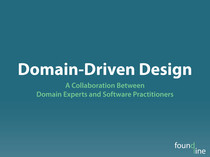A little while ago I read Richard P. Gabriel’s talk on Models of Software Acceptance [PDF]. I couldn’t find a date on this talk but I think it’s rather old, at least in terms of technology. However, there is very little in there that seems dated and much of it is very relevant today. From the introduction:
Building business success on technology is not easy—myths abound based on common sense, tales told by those who have won, analogies to things like evolution, and appeals to inventiveness and innovation. When we look closely at how technology is accepted and how success is built on it, the picture is quite different, and the process of acceptance is both lengthy and unpredictable. In this talk we’ll look at the myths and the realities, we’ll look at many specific examples, and we’ll conjecture a set of principles that might work.
Those of us who use and build technology every day often don’t give much thought to technology acceptance. We’re always trying out the newest and latest technology and are frustrated that others aren’t keeping up with our efforts to bring technology forward. We’re often surprised by what technology does and does not get accepted by the mainstream. We wait impatiently for the rest of the world to catch up with us. A common meme on the popular technology news website Slashdot is, “Where’s my flying car?” Most people don’t want a flying car, at least not yet.
Many of the interesting innovation opportunities are in technology acceptance. Sure, Google has some of the most advanced technology around but how have they lost out to Facebook over Orkut and to Twitter over Jaiku? Both Orkut and Jaiku are owned by Google but Google’s likely superior technology platform does not necessarily equate to superior user acceptance.
The information in Gabriel’s talk is great news for startups and entrepreneurs. Focus on technology that is several years old, keep your design simple, and find a niche opportunity where a larger competitor can’t beat you at gambler’s ruin. Read the full talk [PDF] for all the details.




